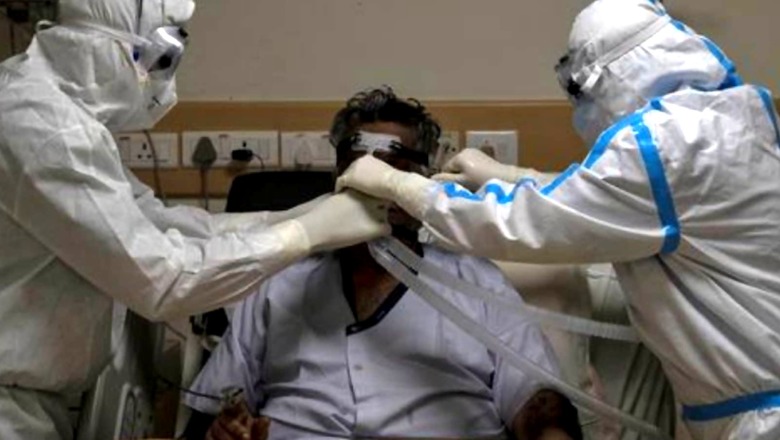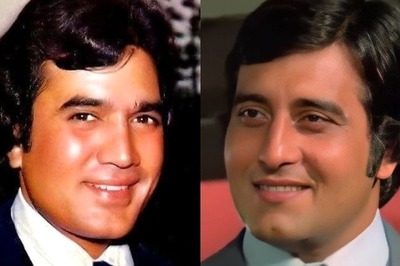
views
Ten districts in Uttar Pradesh have become Covid-free, the government said on Sunday, as the state sees a climbing recovery rate and low cases. What’s more, is that none of the 75 districts in UP have reported fresh infections in double-digits for nearly a week now.
But how did the state arrive at such encouraging figures? News18 breaks down the ‘positive’ cycle:
Increased Testing
Under the state’s ‘Covid Control Model’, Covid-19 testing has been one of the most-stressed upon weapons against the pandemic. According to a report in the Hindu, Uttar Pradesh has tested the maximum number of samples so far – at 6.5 crore – followed by Maharashtra’s 4.8 crore and Karnataka’s 3.8 crore.
The Centre has repeatedly espoused the strategy of ‘test, track, and treat’ to decrease and break the chain of infection in states. The state has ramped up its testing since the second wave of Covid-19.
The state government has said that the Covid positivity rate has slipped to 0.01% here, the lowest in the country. Union Health Secretary Rajesh Bhushan had yesterday warned states reporting over 10% positivity to increase their testing.
Vaccine Upscale
The Health Ministry said yesterday that Uttar Pradesh has improved its monthly vaccine coverage from a mere 4.63 lakh in January to over 1.54 crore in July.
“Despite a large cohort for vaccination and huge size of the state with sizable rural population, the state is committed to providing free vaccination to all its eligible citizen as soon as possible, the ministry said referring to Uttar Pradesh. The state has proactively worked towards this endeavour to which the rising monthly vaccination coverage of the state is testimony,” it said.
“The state has been continuously improving its monthly vaccine coverage from mere 4.63 lakh in January to over 1.54 crore in the month of July. Uttar Pradesh also continues to be among the leading states in terms of vaccination coverage,” the ministry said.
According to experts, vaccination is the number one defence against Covid-19. While getting the jab may not ensure not being infected by Covid-19, data suggests that it helps bring down disease severity and hospitalisation.
Jabs at Booth-level
The BJP ran a three-day vaccination program ‘Apna Booth-Vaccination Yukta’ across the state from July 23 to July 25, to further decentralise the inoculation drive. Uttar Pradesh BJP president Swatantra Dev Singh had at the time asked people to get vaccinated in a bid to fight against the Covid-19 pandemic. He had also urged party workers to participate enthusiastically in the special vaccination program to create awareness among the public and motivate them to get vaccinated, India Today had reported.
Vaccine Enthusiam Even in Rural Areas
Even as the rural areas in many states become victims of vaccine hesitancy, according to data, rural areas of UP are not facing such a problem. Data from the Health Ministry’s CoWin portal had earlier showed that at least 67% of the total vaccinations undertaken in UP between July 1 and 14 were from rural areas. The assessment showed that over 72.69 lakh jabs were given by health teams across 75 districts. Of these, nearly 50 lakh were in rural sites, while the remaining were in urban centres.
Containment Measures
India in April and May witnessed a devastating Covid second wave, with record cases, deaths, and unimaginably stretched healthcare facilities. However, a report in the Times of India suggests that early Covid containment measures helped prevent a catastrophe in UP, which saw a rapid increase in cases during the time, and infections have only come down since then.
From around 150 new cases on March 15 to almost 30,000 cases on April 20, the state saw an increase by a factor of nearly 200.
“To control this unabated rise, measures such as night and weekend curfews were put in place from April 21, culminating imposing of partial curfew in which markets, malls, restaurants, etc were closed and large gatherings were prohibited. The number of cases peaked at around 38,000 on April 24, and started reducing thereafter going below 4,000 new cases on May 25, while the remaining in urban centres,” the report said.
By using the SUTRA model, which uses the parameters of ‘reach and contact rate’ to understand Covid positivity spread, the report explains how parameter values started changing again from April 21 – over the next two weeks, reach increased by another 60% but contact rate came down to 0.29, a decline of almost 50%. While the former was due to pandemic spreading into villages, reduction in contact rate was due to containment measures taken, it said.
The pandemic’s current reach is measured in terms of the percentage of the population affected. It rises as the virus spreads to new areas. It also rises when someone from a previously protected group becomes infected while living in a “bubble.”
The pandemic contact rate is a metric that quantifies how quickly a pandemic spreads through the population. It rises when people quit taking precautions or a mutant with a faster spread arrives. It lowers as a result of treatments such as a lockdown.
Medical Oxygen
During the second wave, many states/UTs also faced a shortage in the supply of medical oxygen. However, UP has ramped up its production of medical oxygen as 254 out of the 551 sanctioned plants have become functional.
Vice chancellor of Aligarh Muslim University (AMU) professor Tariq Mansoor today inaugurated the second high-capacity oxygen generation plant, capable of producing 1000 liters of oxygen per minute, on Saturday. Set up with the Prime Minister’s Citizen Assistance and Relief in Emergency Situations Fund (PM CARES), the plant will cater to over 200 patients at a time.
The first oxygen plant was set up at JNMC in June this year.
Medical oxygen is often needed to successfully treat severe cases of Covid-19, as the virus affects the lungs of the patient. With a third wave reportedly in tow, the government has asked states to ramp up oxygen production and ensure enough availability of the life-saving commodity.
Read all the Latest News, Breaking News and Coronavirus News here.



















Comments
0 comment